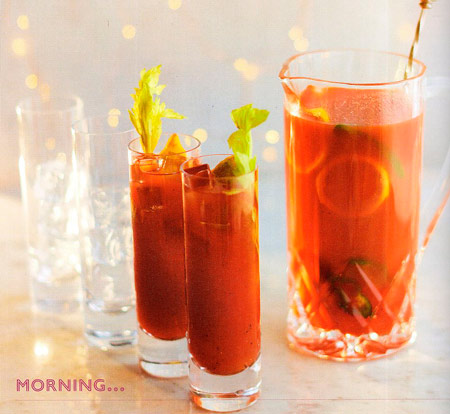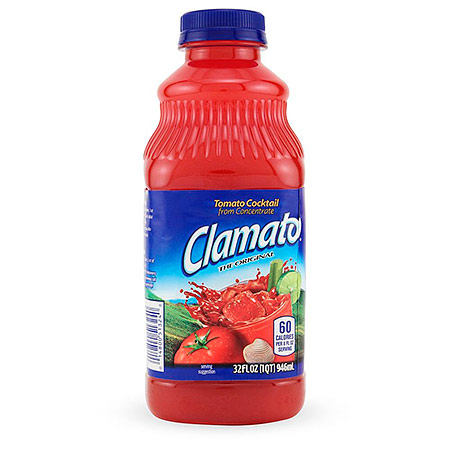The cure(s), or, some bloody episodes.
The morning after an evening roistering with rum, rum punch and English milk punch with or without turtle soup may sometimes find some of our readers somewhat disoriented and discomfited. Such is the price of pleasure.
In the circumstances it is best to accept the reality that the only certain solution involves the risk of revisiting the cause of the malaise to attempt a temporary cure. Moderation, however disfavored it should be as a general rule, makes the odds of recovery good even if the practice requires the sacrifice of euphoria.

The Fortnum’s Threepenny Mary
The proven prescription is the proper proportion of acid, alcohol and potassium, provided with considerable aplomb by the Bloody Mary. Purists contend that the soupy stew passed off in the run of bars as the drink, encumbered with bacon, green beans, celery, cheese, hairy horseradish, smooth horseradish sauce, olives, cocktail onions, pepperoncini, pickled okra, shrimp, sopressata, steak sauce of various kinds and other additives alone but more usually in multiple combination has strayed so far from its original residence that it does not deserve the hallowed name, and the purists have a point.
Steve Fallon, the legendary shepherd of New Wave and punker bands and progenitor of the Hoboken Sound that redeemed the otherwise haunted culture of the 1980s, made at Maxwells for favored friends an austere Bloody Mary even better than the big blended bottomless version the club served with brunch. His formula included only three elements; Stolichnaya Pepar vodka, a good dose of lemon juice and of course the requisite tomato juice. In typically perverse Russian fashion Stolichnaya has replaced the nuanced Pepar with a vodka flavored with crude fire so you will need to steep some chilies in vodka to replicate the Fallon Mary.
Paul Kay did something similar, also during the eighties and also in Hoboken. He knew what he was doing from his college years when he tended bar for the catering companies that staffed the better parties held at Columbia and elsewhere in what then was a blighted Manhattan. His Blood Mary combine equal parts vodka and Realemon, usually a couple of shots each, with Worcestershire and tomato juice, nothing more.
Back in the 1970s at The Grenadier in Belgravia emulsified its Bloody Mary through violent shakes with ice in a martini maker for serving up straight in a stemmed glass but only on Sunday and during the day, when they set up a special bar at the front of the house for the temporary purpose. You will want to pour tomato juice, Worcestershire, Tabasco and citrus into the shaker with the ice and go mad.
In 1939, Ambrose Heath included a Tomato Cocktail in his Good drinks. It is very nearly a Bloody Mary, using Sherry instead of vodka and adding a drip of cream along with lemon juice and Worcestershire. It is a weak drink--only a glass of the Sherry per “1 tin,” size unspecified, of tomato juice--that is much improved by a change in proportions and some vodka. Put some ice in a glass, then about 2 teaspoons each of the lemon and Worcestershire followed by two shots of vodka, a shot of Amontillado or Fino, tomato juice and a Tablespoon of heavy cream. Stir.
Purists go too far, however, in decrying all use of multiple ingredients, as the estimably complex Fortnum & Mason Threepenny Mary demonstrates. It requires eight ingredients, is both complicated and festive and may be, should be, assembled in advance to steep, so it is handy for a crowd. Alchemy. Our version is more accessible to Americans than the Fortnums original, which uses a measure of orange marmalade vodka instead of the bitters. Proportions may be doubled, tripled or otherwise increased at constant proportion.
- 100 parts tomato juice
- 20 parts vodka
- 5 parts smoky, peaty Islay single malt Scotch
- 5 parts Worcestershire
- 2½ parts Amontillado Sherry
- healthy splash of orange bitters
- a trace of liquid beef extract (see the Notes)
- lemon juice for service
- the garnish or garnishes of your choice
Mix everything but the lemon and garnish together and let it steep, overnight or longer, before service over ice with the lemon and garnish(es). The perfect beefy accent for this formula is Kitchen Accomplice reduced sodium beef extract.
The Chart Room in New Orleans is a classic dive frequented by cooks and other kitchen workers along with the usual New Orleanian mix of tourists, freaks and weirdos. The atmosphere is wonderful. The bar builds each Bloody Mary to order, never premixes anything in advance. Like Fortnums, the Chart Room complicates the original concept but that is about the only resemblance between the two drinks. Where the Fortnums formula requires precision, the Chart Room never measures anything. The bar combines even more ingredients than Fortnum’s, cheap vodka mixed with Zing Zang prepared Bloody Mary mix, itself a riot of tomato and spice, lemon, lime, Cajun seasoning (like Tony Cachere’s), Crystal hot sauce, Tabasco, Worcestershire and Angostura as well as Peychaud bitters. Garnishes of, yes, pickled green bean and okra, forgiven because this after all is New Orleans.


